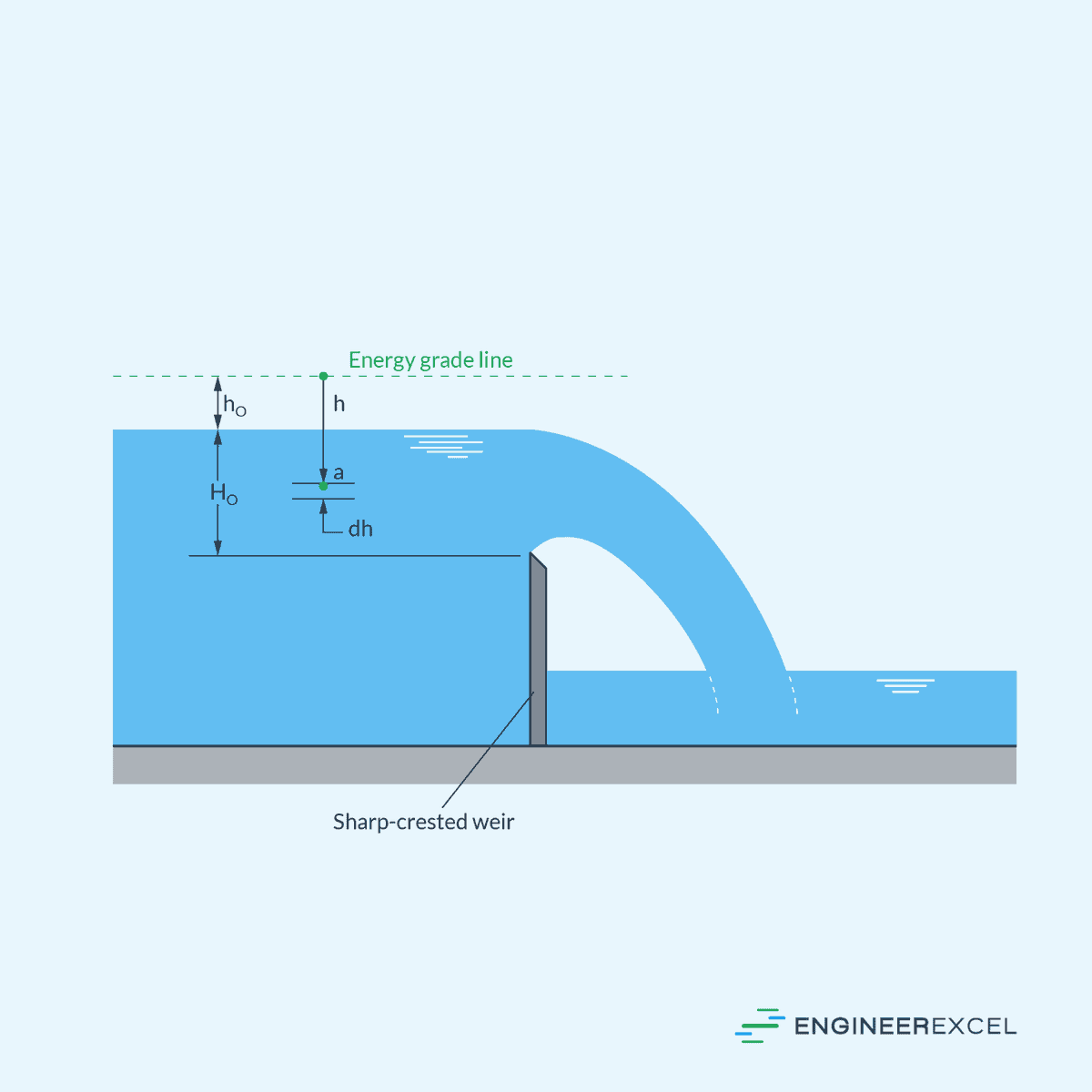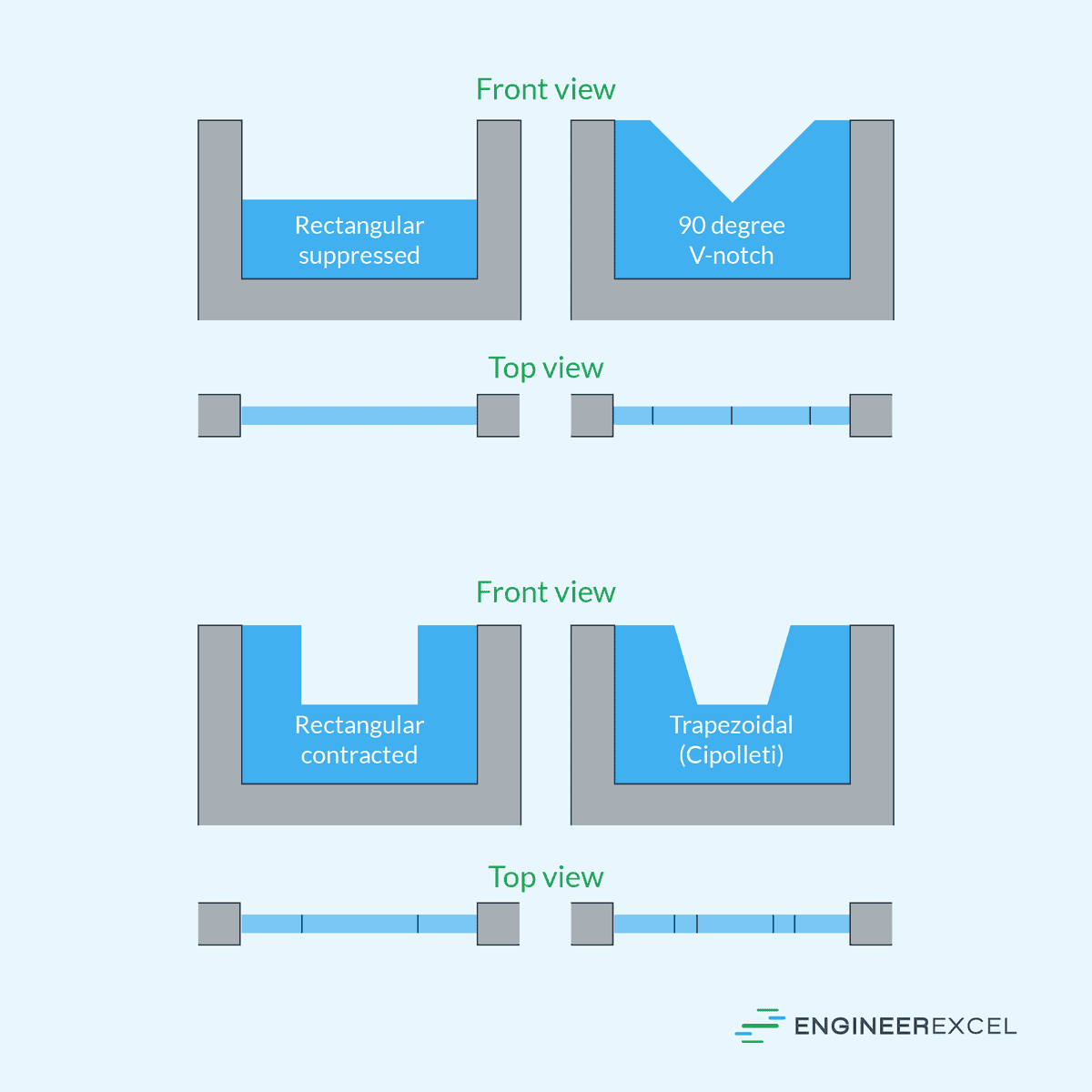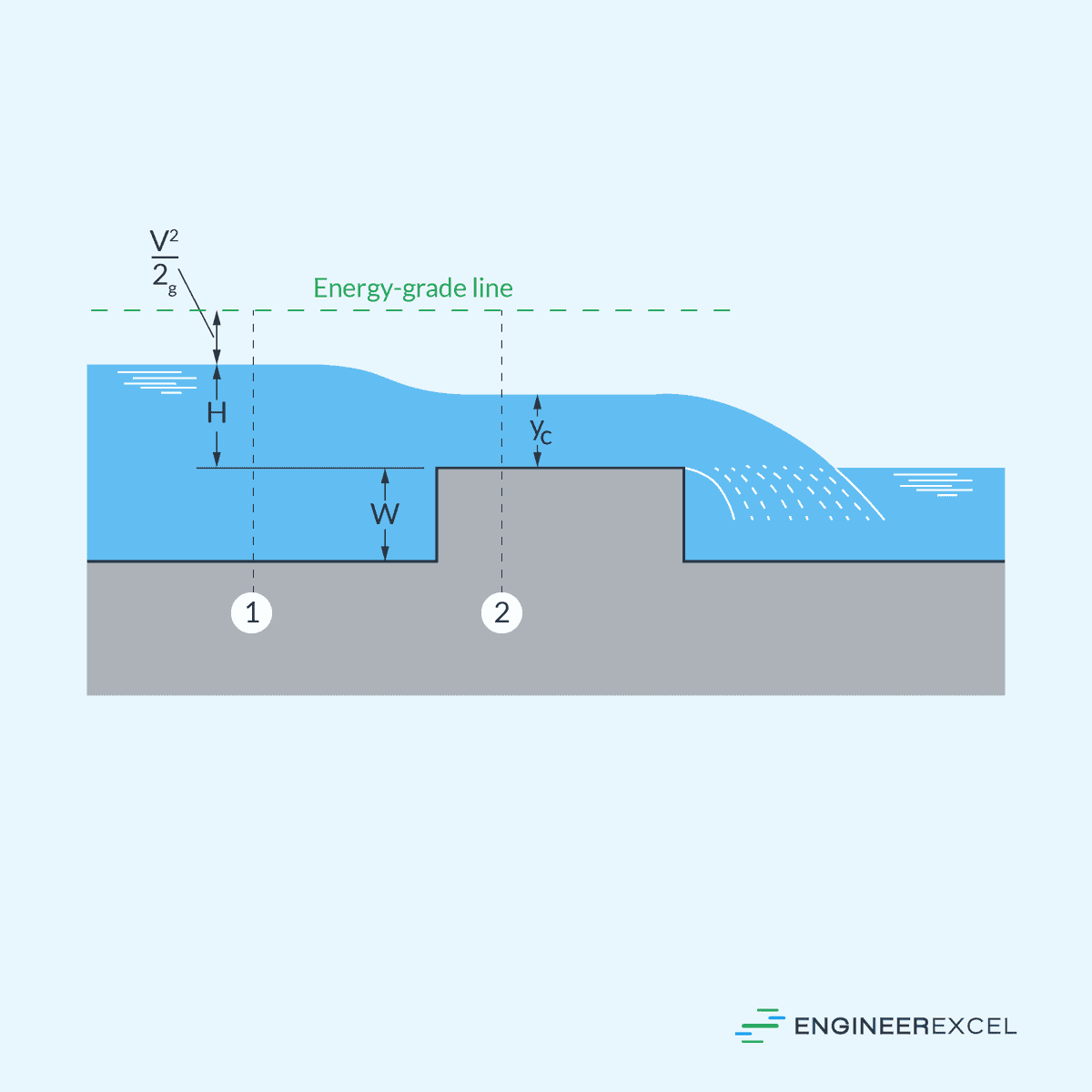Weirs are structures built across rivers or streams to control water flow by creating a barrier that raises the water level upstream. They are commonly used for measuring flow rates, preventing erosion, or diverting water for various purposes such as irrigation or hydropower.

In this article, we will discuss the fundamental operation of weirs, the different types of weirs, flow rate calculation, and various applications of weirs in hydraulic engineering.
What Are Weirs
Weirs are hydraulic structures that span across open channels such as rivers or streams, creating an obstruction that allows water to flow over the top. The fundamental operation of a weir involves increasing the water level upstream, creating a controlled overflow. The water level rises to a desired height, causing a spillover that is predictable and manageable.


Elevate Your Engineering With Excel
Advance in Excel with engineering-focused training that equips you with the skills to streamline projects and accelerate your career.
A weir functions by providing a physical barrier that modifies the flow characteristics of water bodies. The water upstream accumulates and the excess flows over the crest of the weir. The height of the water that spills over, referred to as head, is directly related to the flow rate over the weir.
The flow rate can be calculated by measuring the height of the water above the base of the weir, which correlates with the volume of water passing over the weir per unit of time.
Types of Weirs
Weirs can be categorized into two major types: sharp-crested and broad-crested.
Sharp-Crested Weirs
A sharp-crested weir, shown in the diagram above, is characterized by a thin plate edge over which the water flows. This edge causes the water, or nappe, to spring clear from the plate.
Such weirs are most effective for low flow scenarios and can provide high accuracy in flow measurement when installed properly. They are often used in laboratory settings and for temporary flow measurement installations in small channels.
The height of a sharp-crested weir can be at or just below bank-full or channel-forming flow depth, and the weir orientation can range from 90° (perpendicular) to a downstream incline.
Sharp-crested weirs can be categorized into three types, depending on the shape of the crest: rectangular, triangular, and trapezoidal. In addition, rectangular sharp-crested weirs can further be divided into two types: suppressed and contracted.
In a suppressed rectangular weir, the crest is fully submerged, meaning that the water level upstream of the weir is above the top of the weir. On the other hand, in a contracted rectangular weir, the crest is not fully submerged, and the water level upstream is below the top of the weir.
These types are illustrated in the diagram below.

Broad-Crested Weirs
Broad-crested weirs are designed with a wide crest over which the water flows. This design allows for a more stable flow profile and is less sensitive to variations in upstream flow levels. Broad-crested weirs are suitable for higher flow rates and turbulent conditions.

Broad-crested weirs can significantly reduce the speed of the water, making them ideal for larger-scale water distribution and measurement systems. They are reliable structures for river engineering and water management applications, as seen in some clarifier designs for water treatment.
Flow Rate Calculation
Sharp-Crested Weirs
Rectangular Sharp-Crested Weir
For a rectangular sharp-crested weir, the discharge is given by:

Where:
- Q = flow rate [m3/s]
- Cd = discharge coefficient [unitless]
- B = crest width [m]
- Ho = head over the weir measured from the weir crest to the upstream water surface [m]
The discharge coefficient is experimentally determined and may vary with the weir geometry, Reynolds number, and Weber number. Based on Rehbock’s experimental results, Cd may be approximated as:

Where:
- P = height of the weir plate from the channel bottom [m]
Triangular Sharp-Crested Weir
For a triangular sharp-crested weir, the discharge is given by:

Where:
- Cc = contraction coefficient [unitless]
- θ = notch angle [deg]
The contraction coefficient is dependent on the notch angle, as shown in the diagram below.

For a 90° notch angle, the contraction coefficient (Cc) is approximately 0.585, leading to:

Trapezoidal Sharp-Crested Weir
For a trapezoidal sharp-crested weir, the discharge is given by:

Where:
- LT = length of the base of the trapezoidal opening [m]
Broad-Crested Weirs
For broad-crested weirs, the flow rate can be calculated using the following equation:

Where:
- C = weir coefficient [unitless]
- L = effective width of weir crest [m]
- H = head difference between upstream water level and crest elevation [m]
The weir coefficient can be obtained from empirical relationships or calibration studies. Its value depends on the measured head and breadth of crest, as shown in the table below.
Weir Applications
Weirs are critical structures used in various hydraulic engineering applications due to their ability to accurately measure flow rates and manage water levels and sediment.
Flow Measurement
Weirs facilitate precise open-channel flow measurement by creating a relationship between the water depth and flow rate over a barrier. Key considerations for accuracy include the proper installation of the weir set at right angles to flow and ensuring a straight and level crest. For example, rectangular and Cipolletti weirs must maintain a level crest for the accurate computation of flow rates.
Water Level Control
Weirs are employed in water level control to maintain desired upstream water levels; they can be used to create reservoirs or attenuate floodwaters. The height of the weir is a critical design component that directly influences the upstream water level, effectively acting as a dam for flow regulation.
Sediment Management
In sediment management, weirs can prevent downstream erosion by trapping sediments and are an essential part of sustainable watershed management. Varying the design of a weir, such as its length and orientation, engineers can influence sediment deposition patterns and reduce sediment transport to downstream channels.
